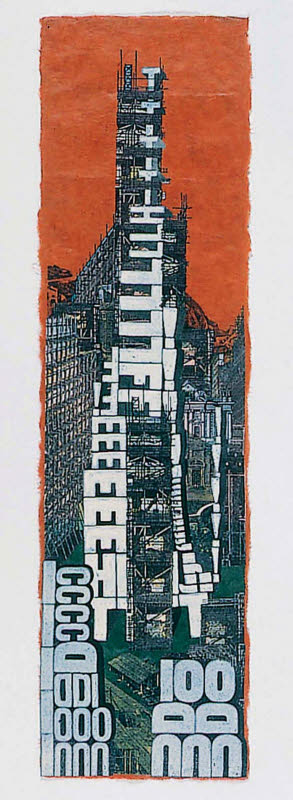Urban settings
Urban situations produce a wealth of diverse architectural drawings, varying in scale from strategic studies of a city, its metabolism, topography, and culture, to relational studies of more immediate context—the block or the street—and finally through to specific spatial studies that negotiate boundaries, transitions, structure, and materiality.
The range and complexity of issues is matched by the diversity of “urban drawing types” and approaches to design in urban contexts. During the process of urban design, drawings are the vital component in terms of the way they can open up the debate and engage others. “Urban drawings” are key drivers for the design team, in the eventual resolution of the city’s often-conflicting demands. The role of the urban drawing is two-fold: first, to synthesize; second, to communicate.
Urban drawings incorporate wide-ranging specialist inputs and bring together the perspectives of diverse stakeholders. While software can facilitate information management, these complex design decisions still require judgment based on a deep understanding of the city, and like any other architectural situation, will need to be worked out through drawings, models, and artifacts at a range of scales.
One of the dominant kinds of urban drawings today is the perspective, and computer-generated modeling enables building forms to be placed in context with photographic precision. With perspective comes the ability to see the city as a unified scene and also to demonstrate explicit formal relationships. The computer facilitates the “designing” of the city and allows it to be visualized in three dimensions.
At the same time, however, the expectation of these photorealistic images should not preclude other, perhaps more subtle, studies that foreground less tangible aspects of urban life—drawings that capture, for instance, the performance, metabolism, and life of the city.

Anne Desmet’s New Metropolis incorporates wood type, wood engraving, lino-cut, flexograph, and collage on paper.
In drawings that show context for a specific building, concentrate on careful observation, measurement, and visualization of the immediate surroundings. Detail seen from a further distance matters less.
TIP OBSERVATION
Use drawings and other media over a period of time to develop an understanding of changing conditions and different patterns of inhabitation.

Devanthéry & Lamunière, School of Life Sciences, Lausanne, Switzerland, 2005. This digital render drawing shows the glass entry wall of the building, which opens up the world of research and scientific information to the city. The night scene and transparent foreground figures emphasize the life within the three-story reception.
